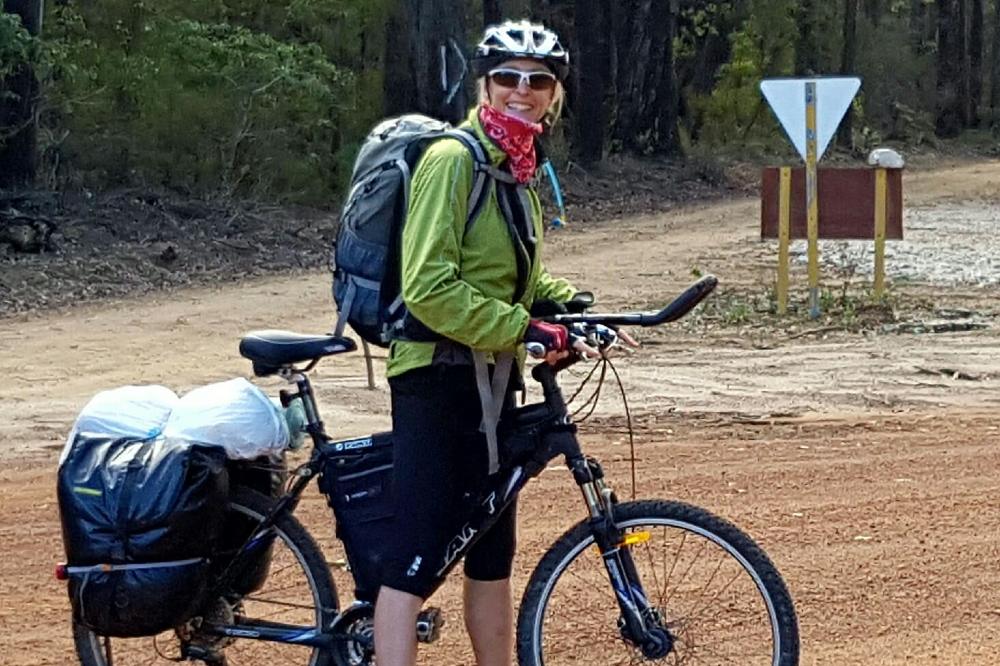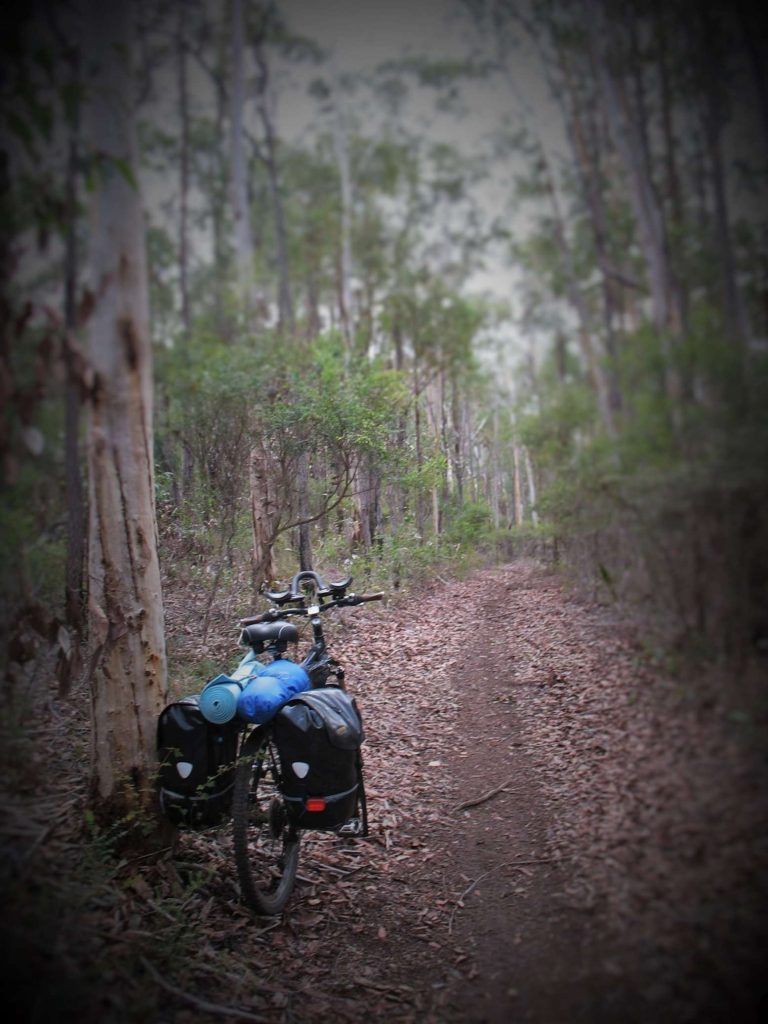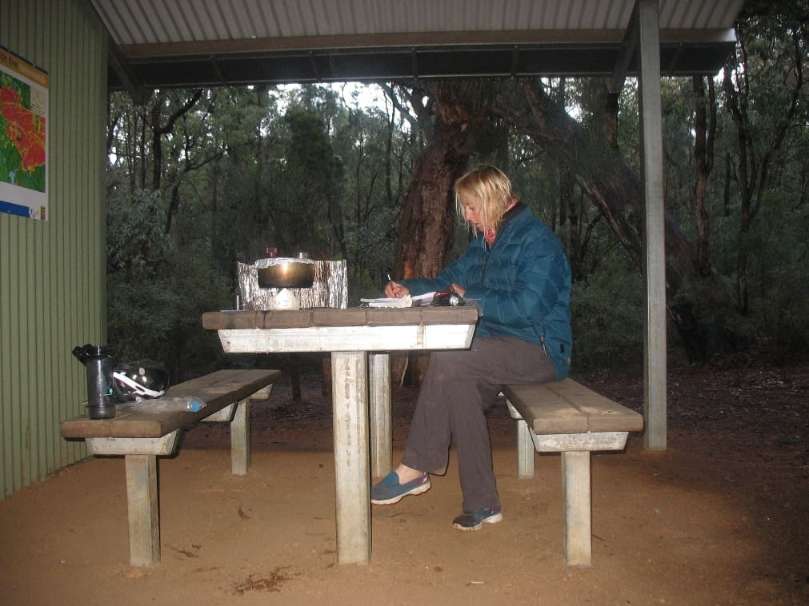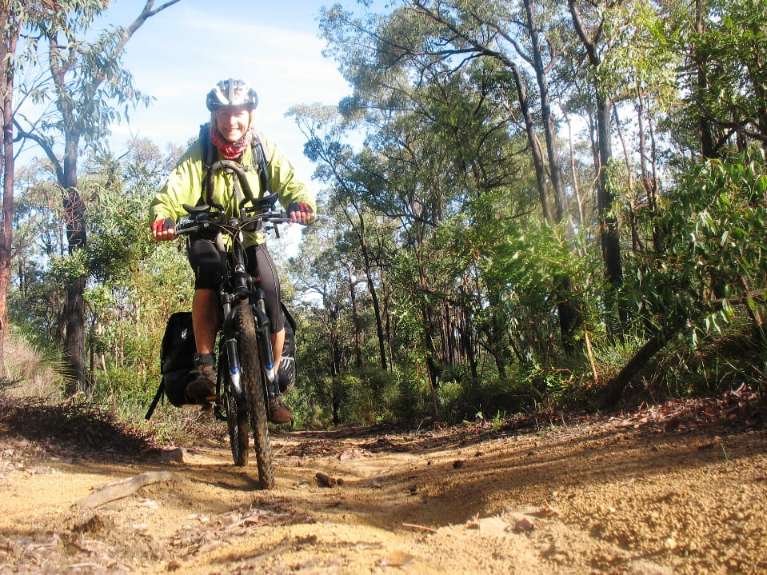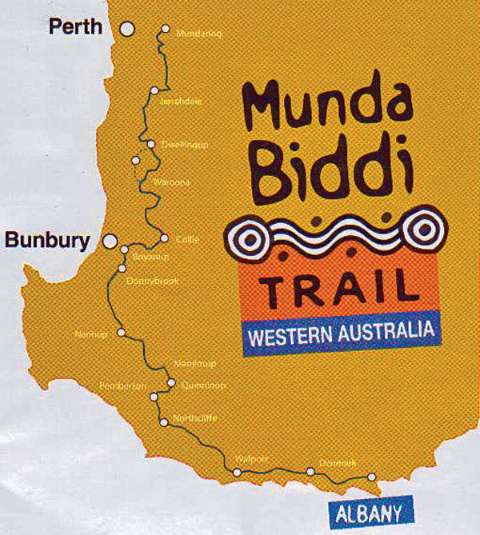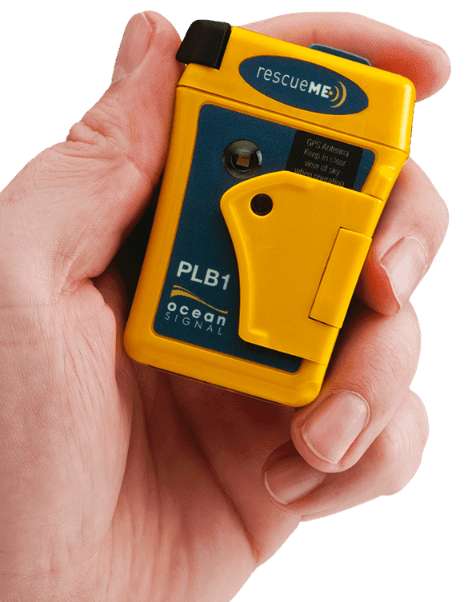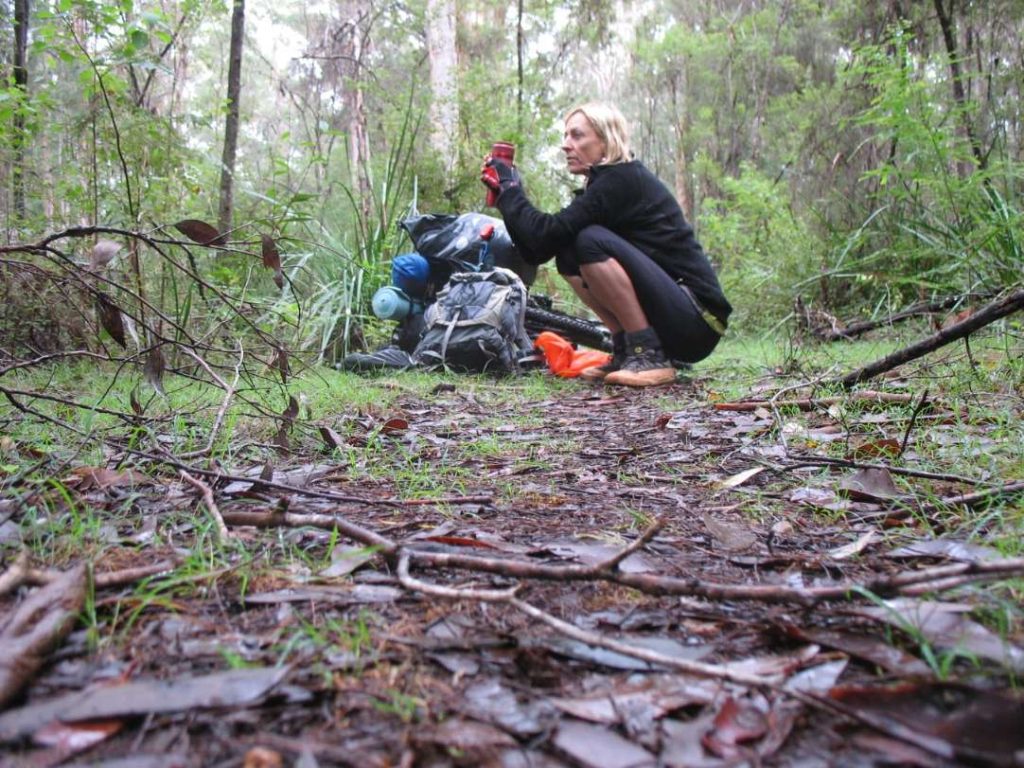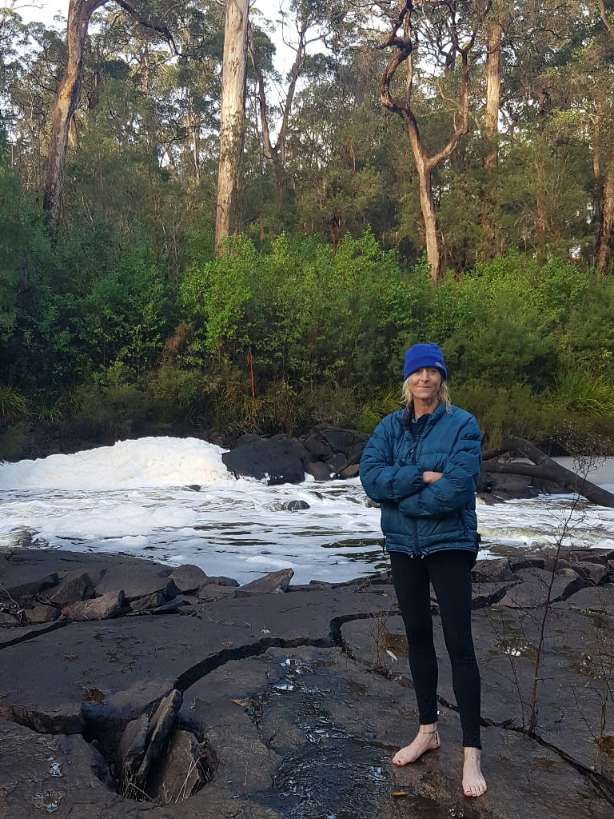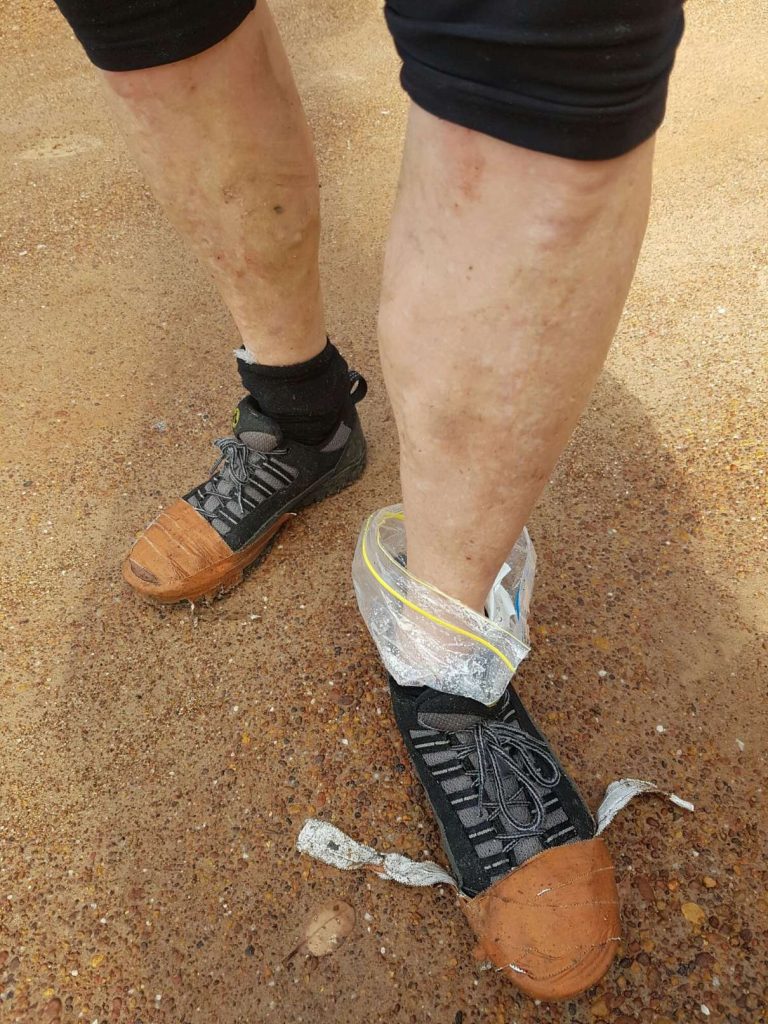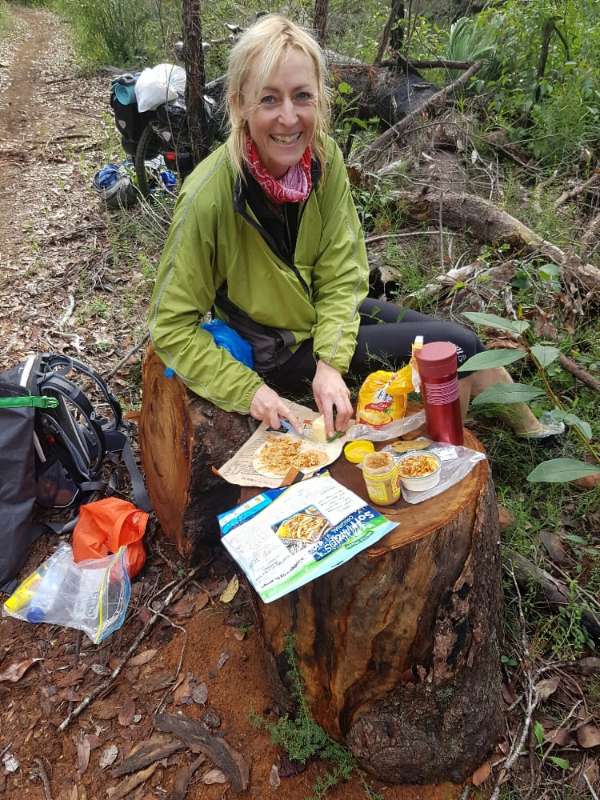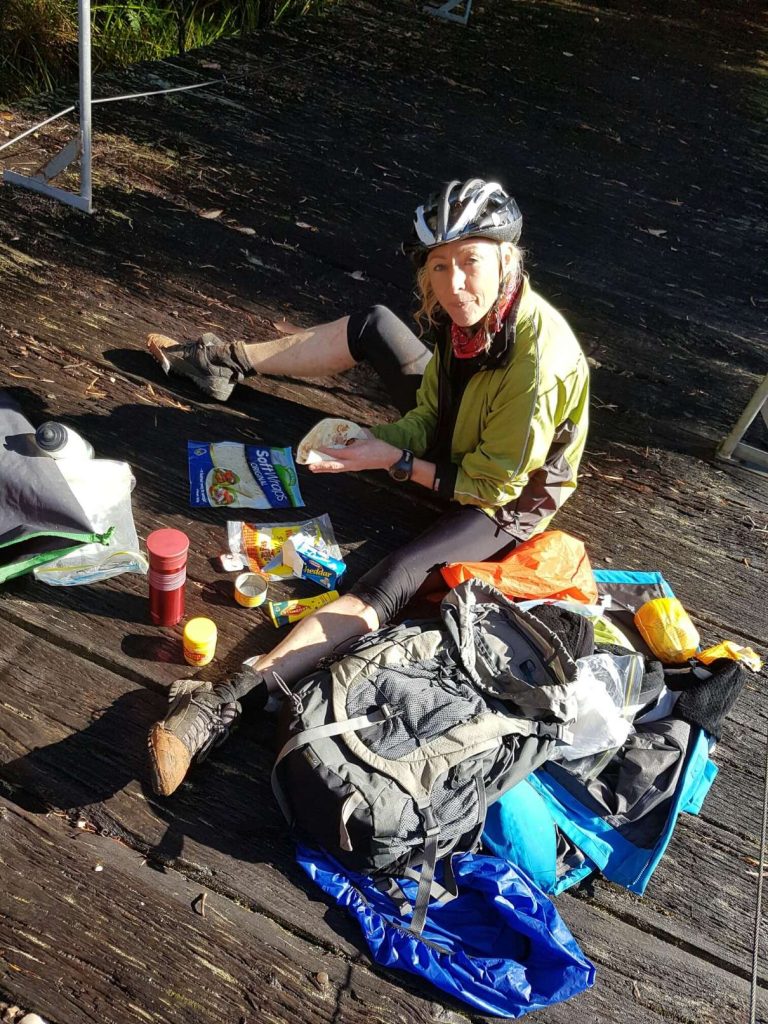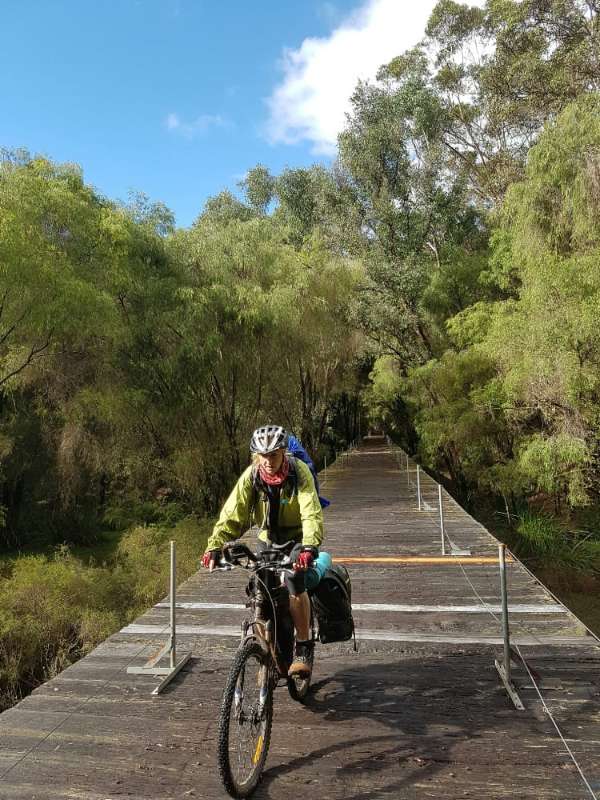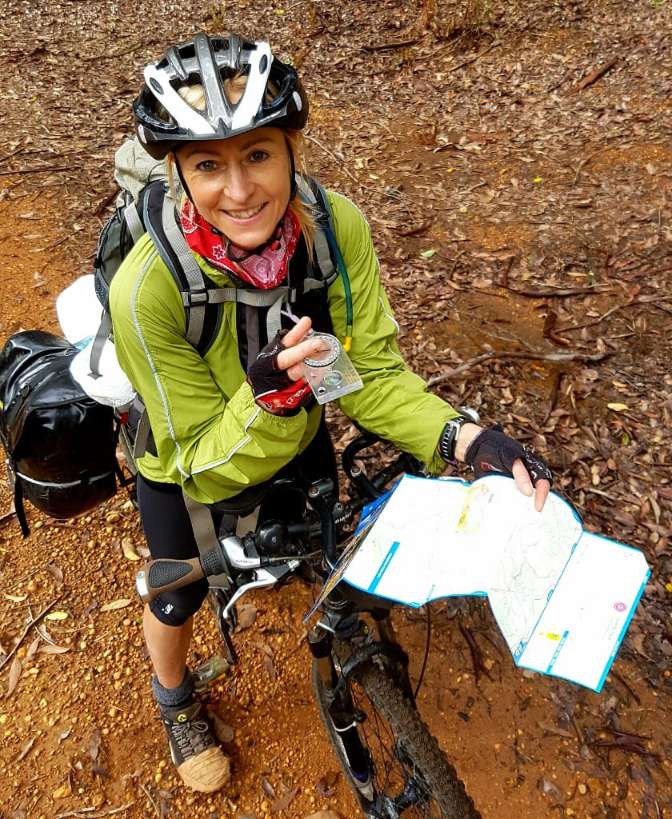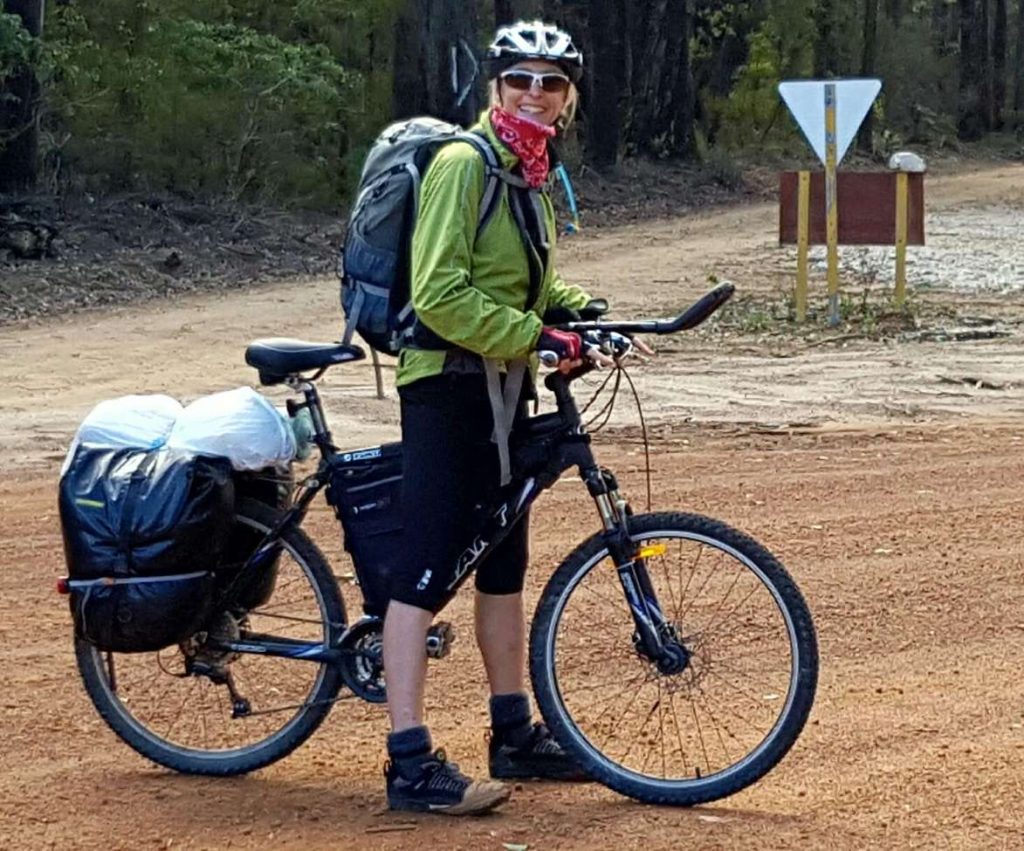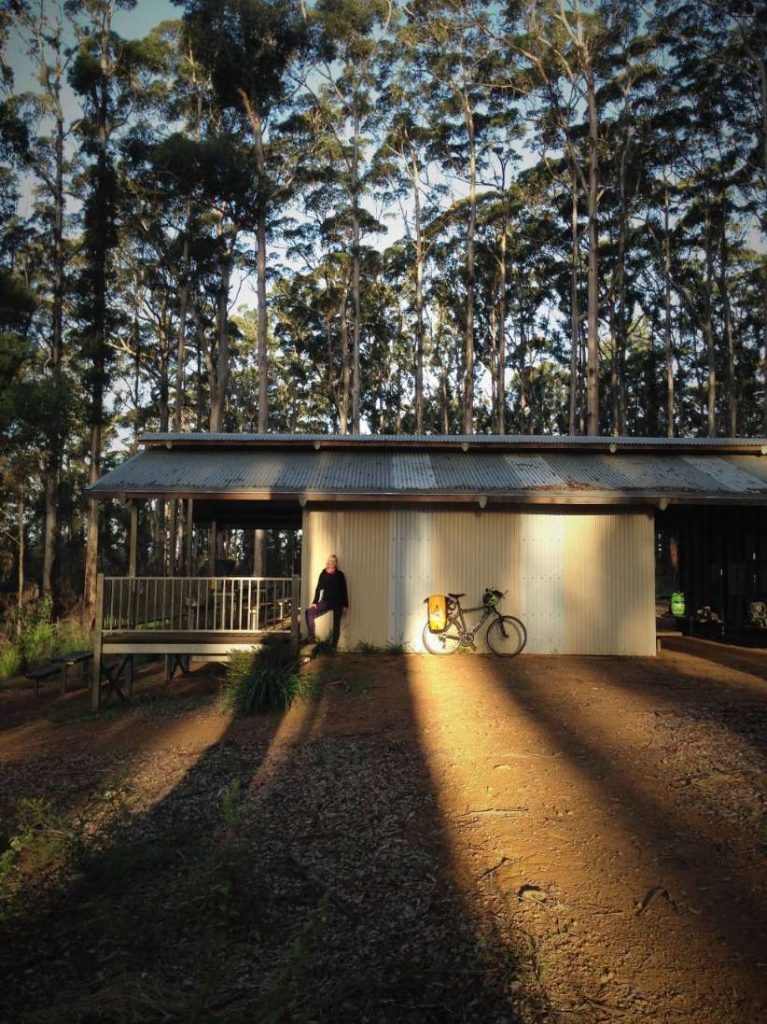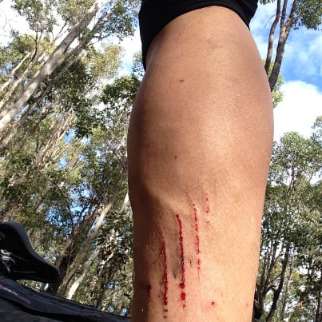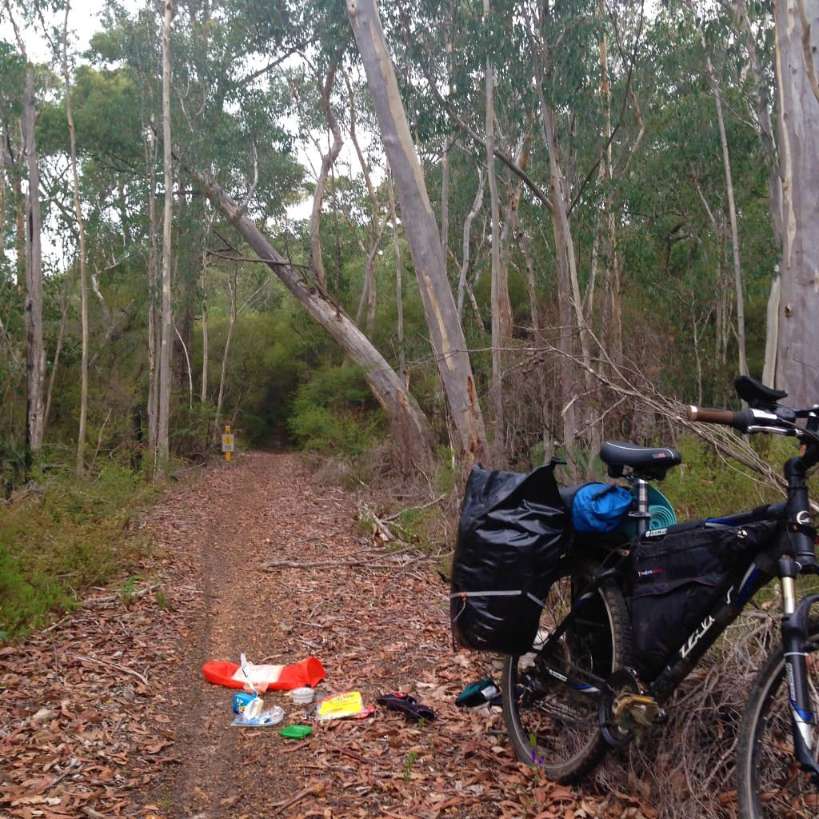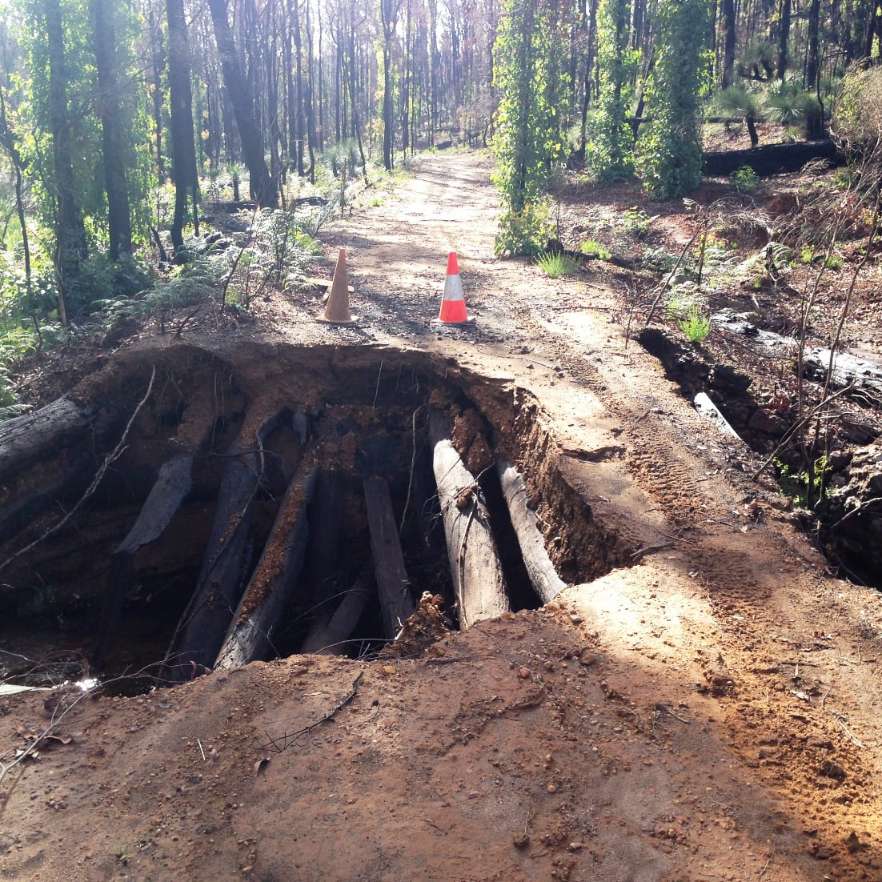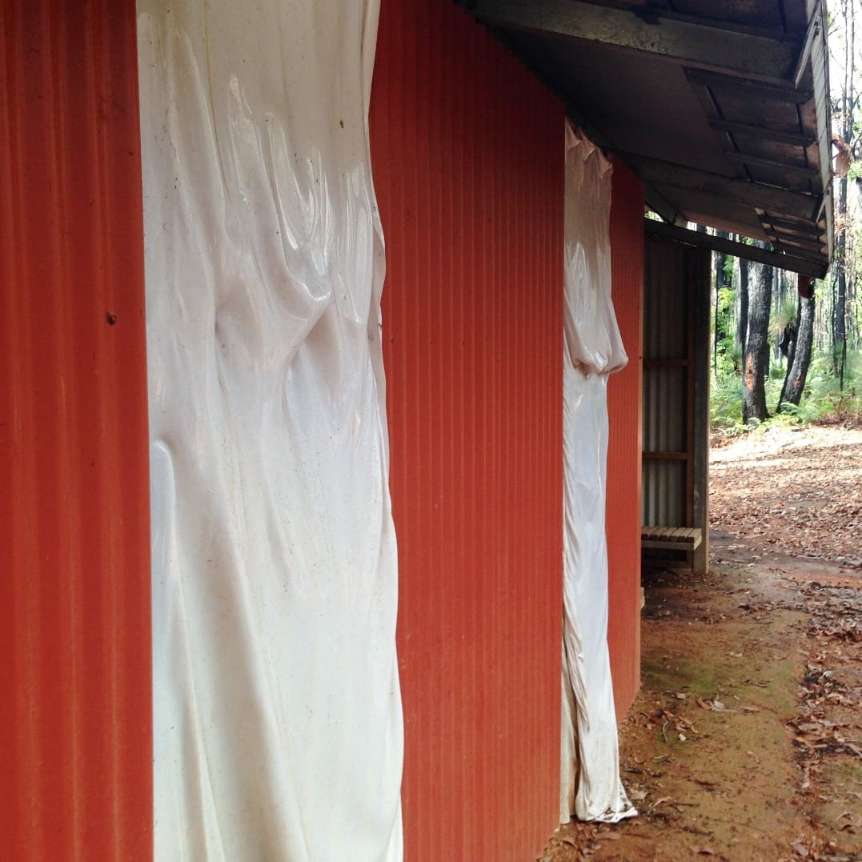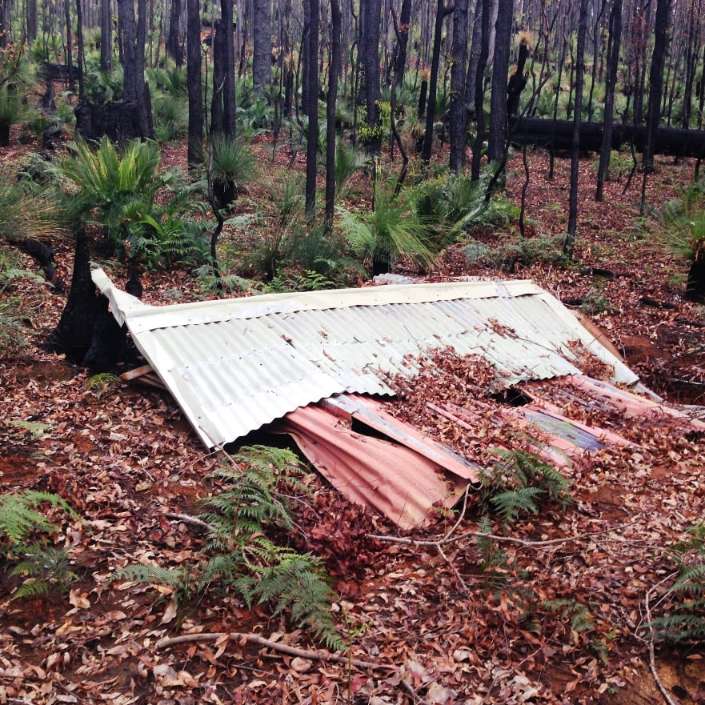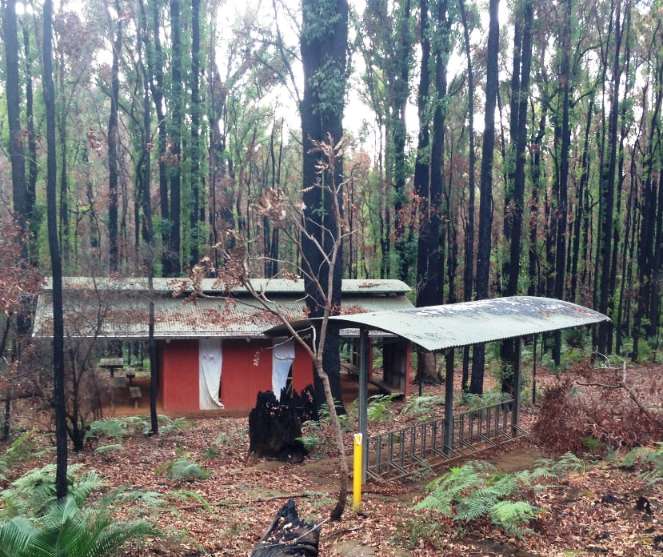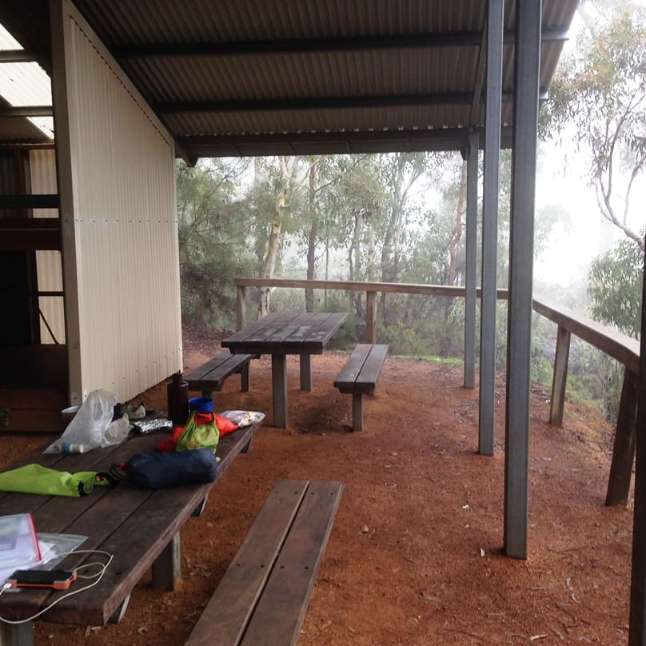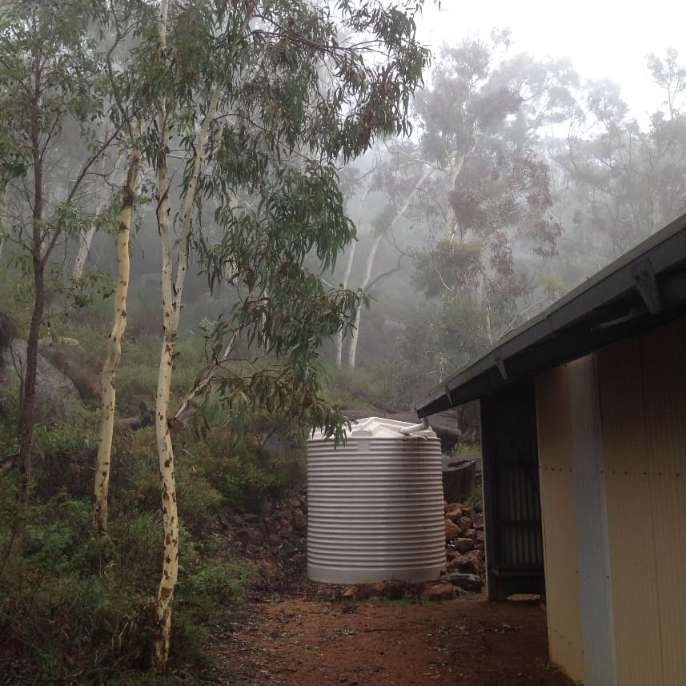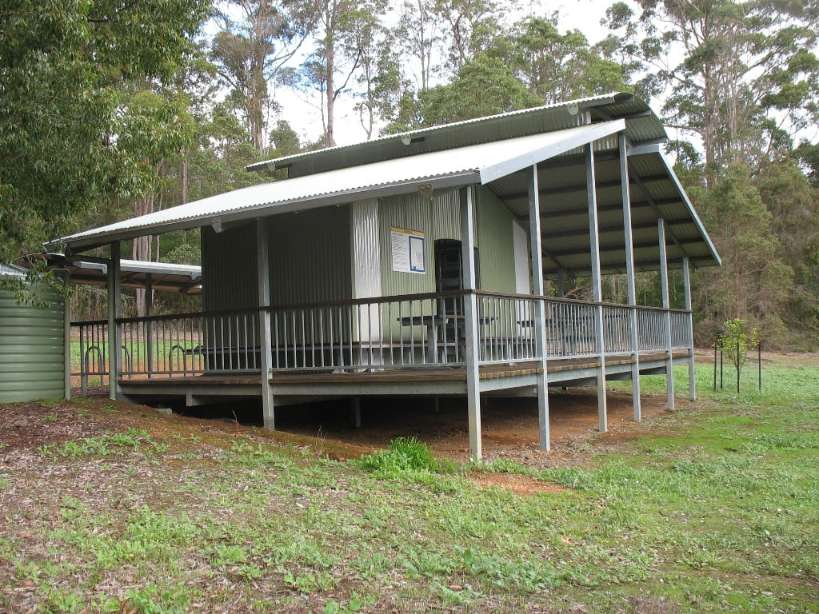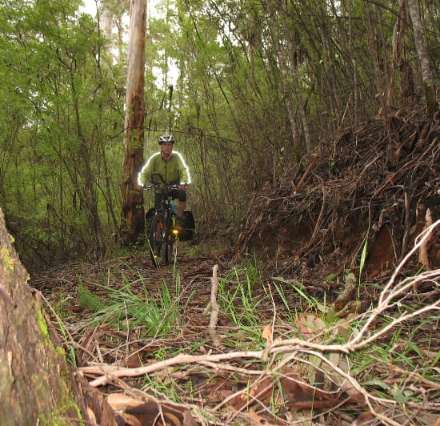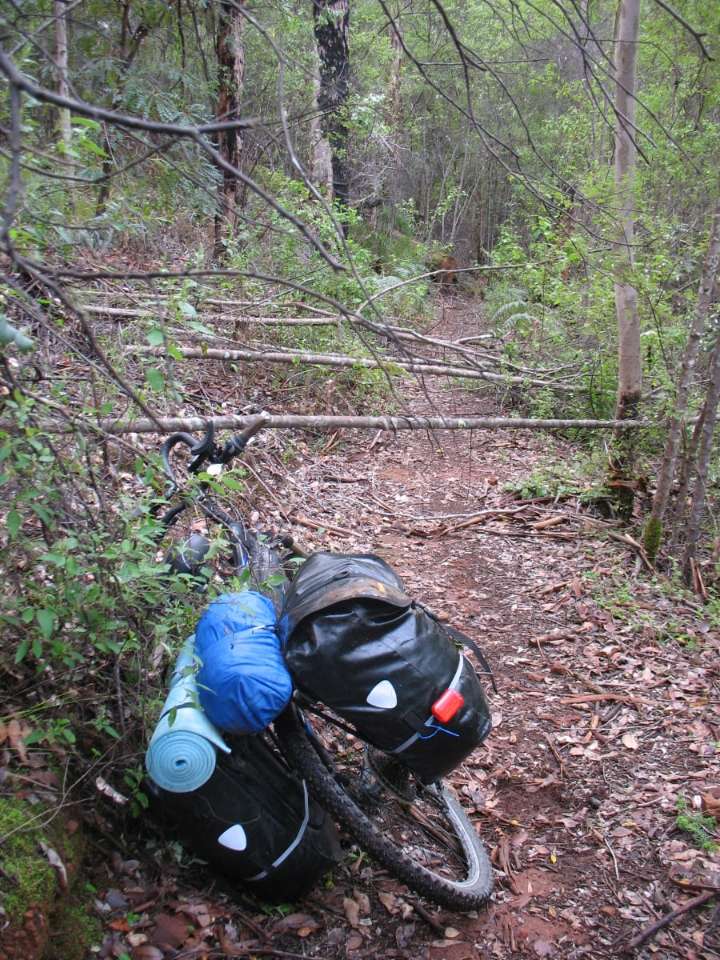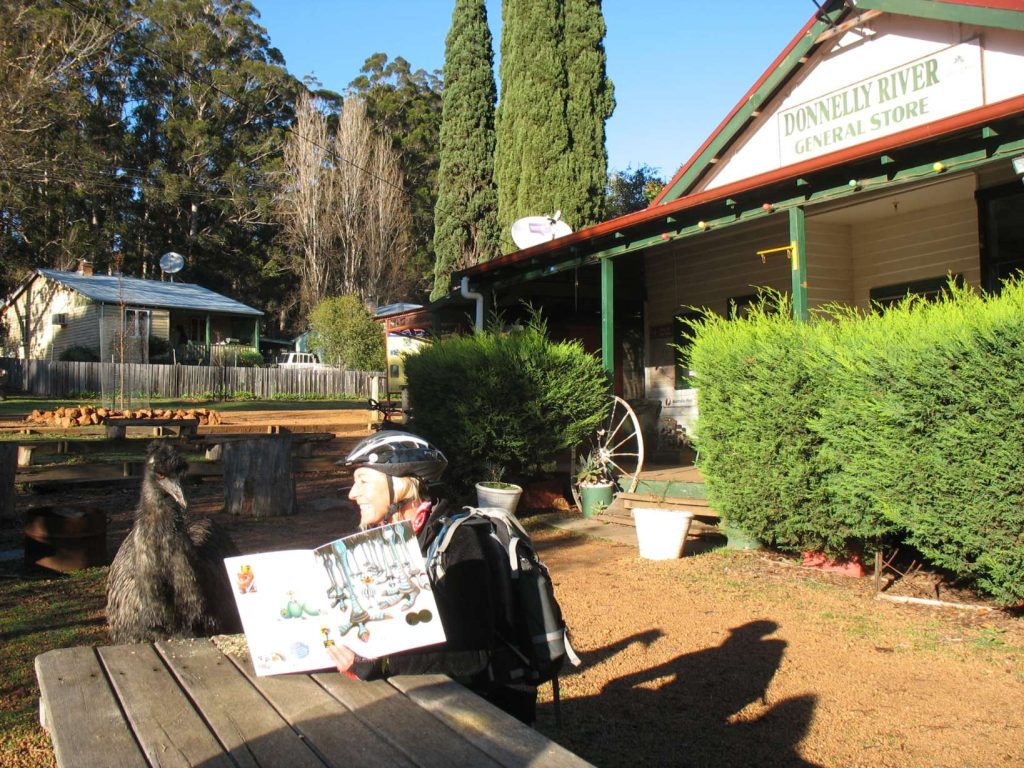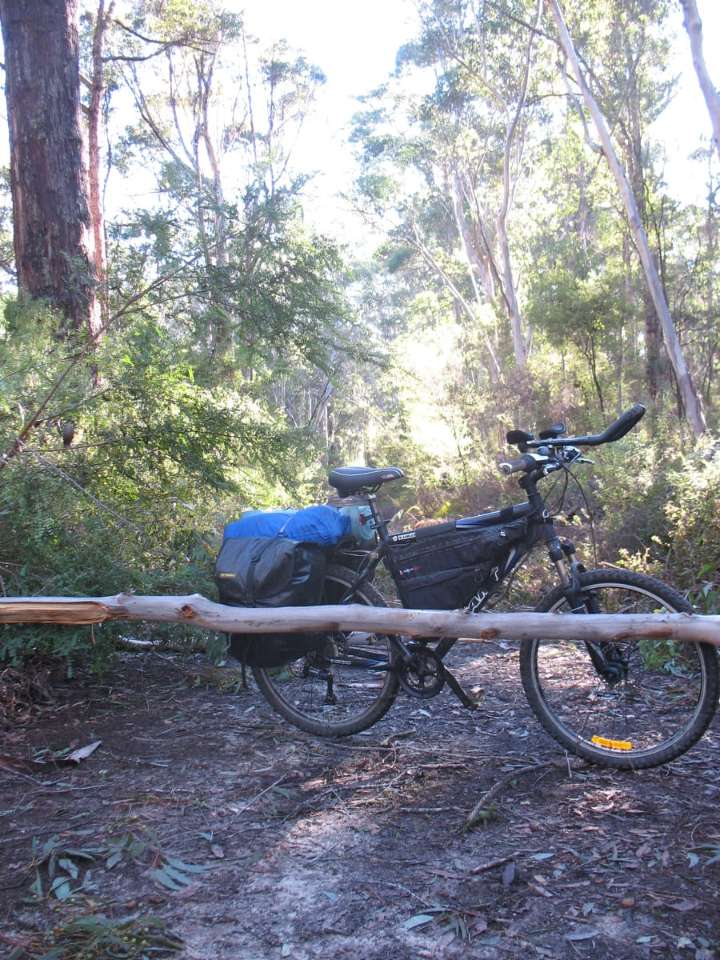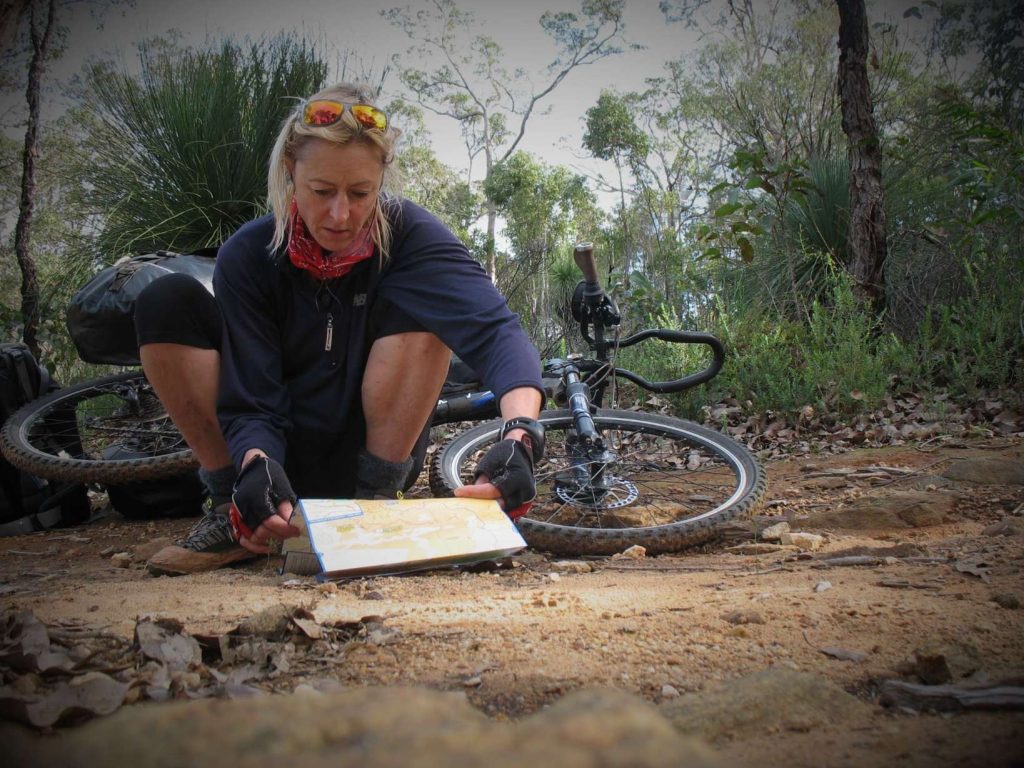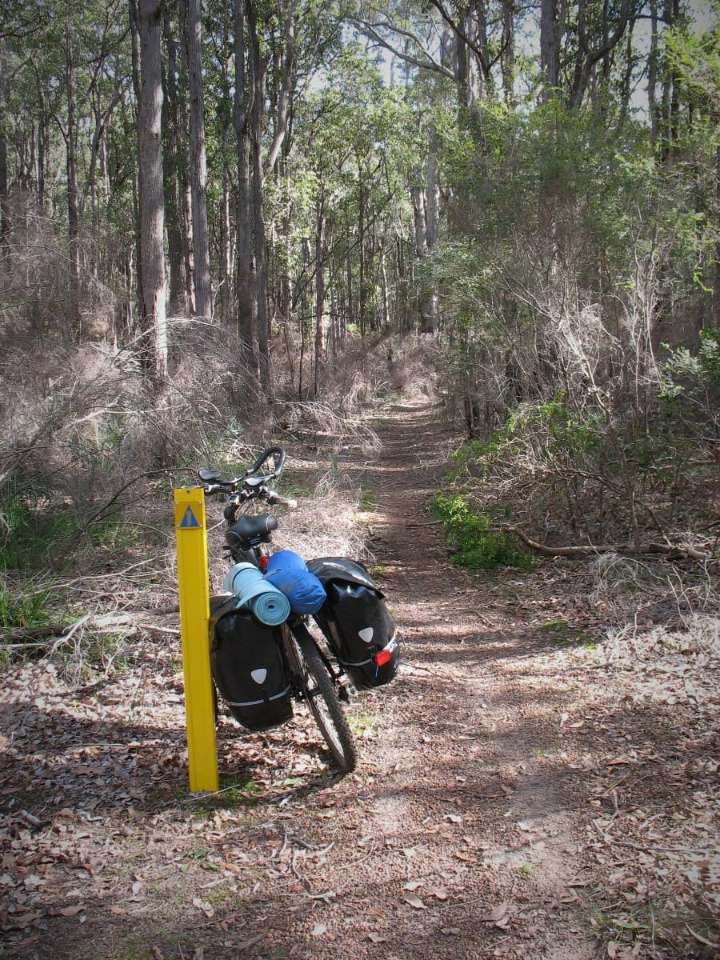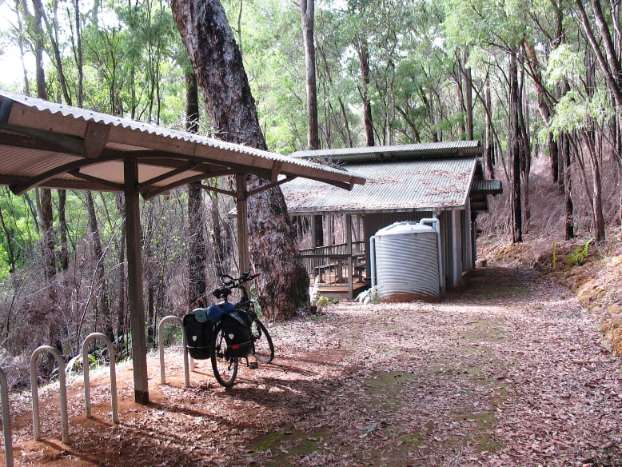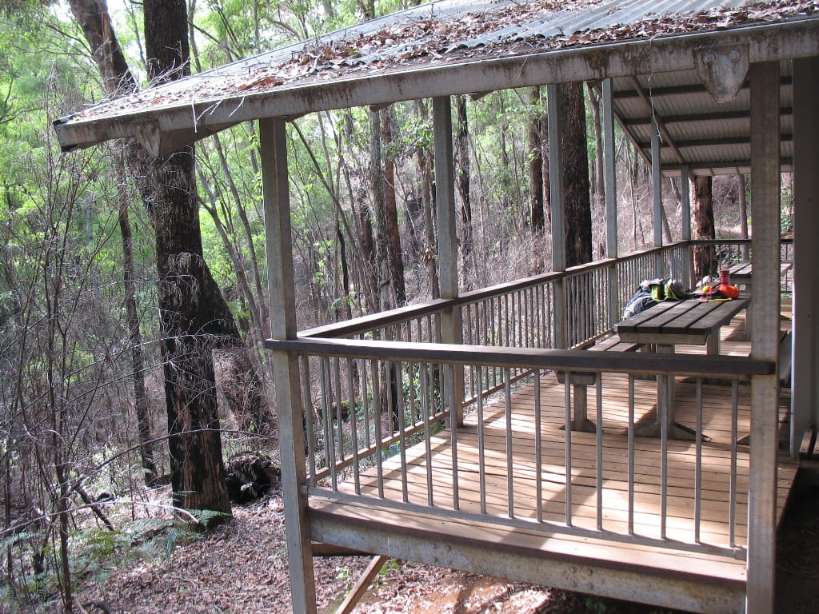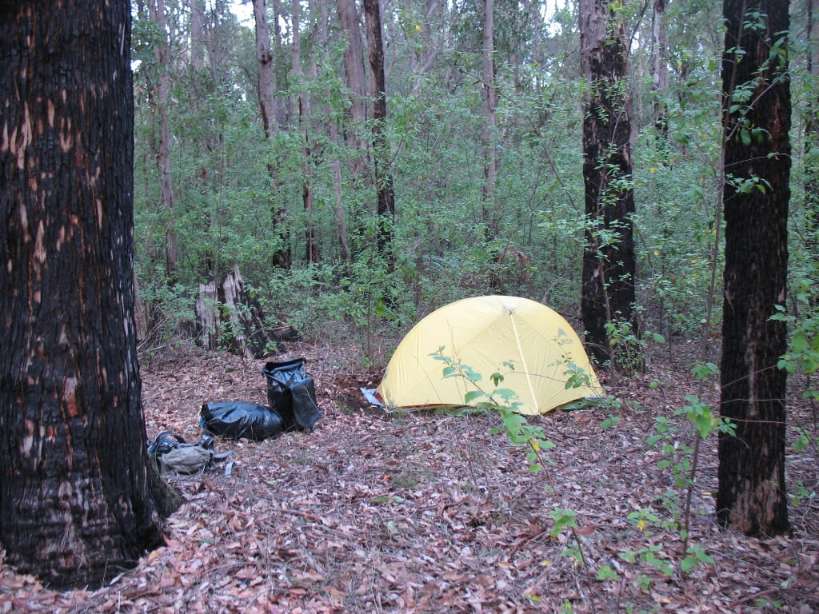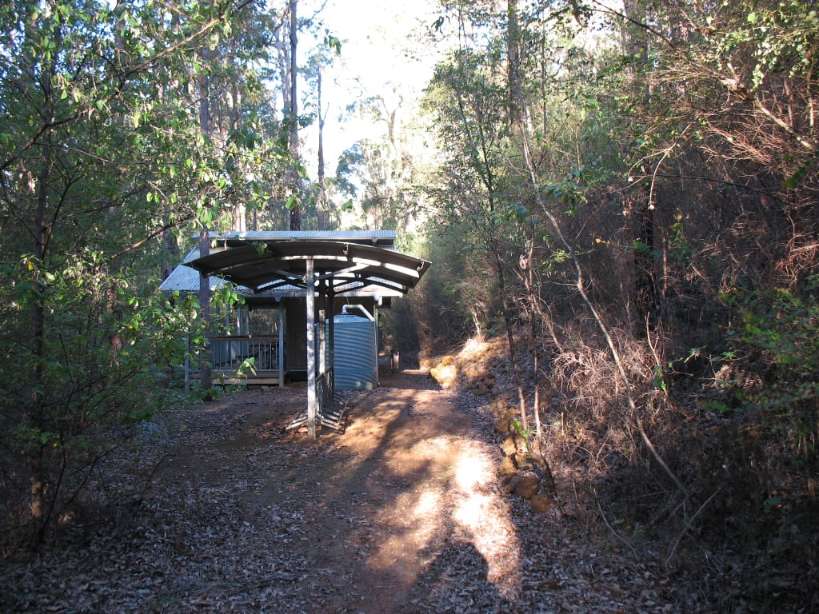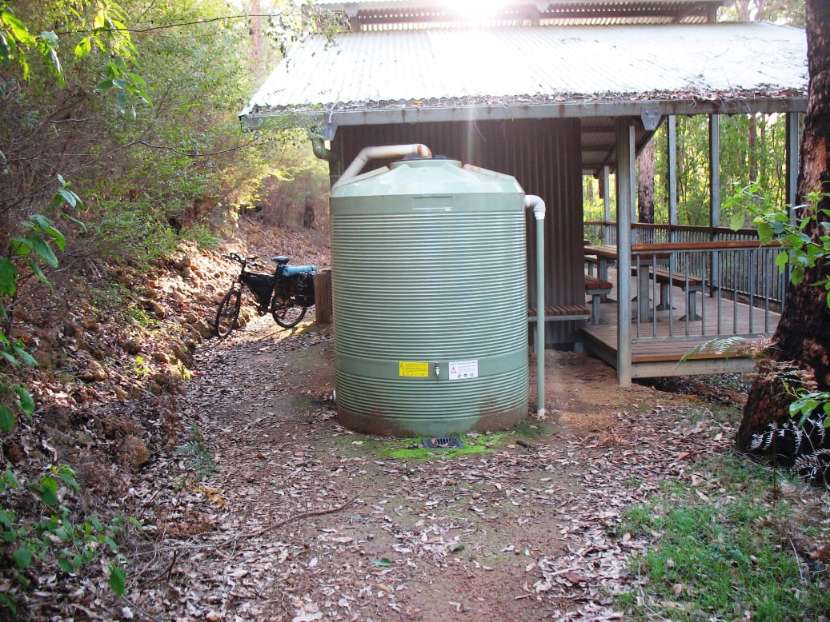In May and June 2016, I rode (solo) the full length (1000km) of the Munda Biddi Trail, a mountain biking trail running from Mundaring (near Perth) South to Albany (South coast of Western Australia, and near where I grew up).
I went from South to North, which I highly recommend. I’m sure there were less uphills!!
I cannot say I enjoyed all of it. (some I enjoyed in hindsight!)Much was very hard, and some sections were on boring roads, some of which made no sense. But especially the section above Manjimup was stunning, with lots of single track through beautiful karri and jarrah forest. I found it very physically demanding. Most nights I was in bed by 7pm. Before I began I was 57 kg, and fully expected to be much lighter. But in fact I weighed the same, but had 10% less fat.
When I got back to Perth, I had a week or so of feeling disjointed; it had finished too suddenly. It was strange not be riding every day. Also very difficult to adjust to real life again.
Many people have asked me, why? Why alone, and why at all? (My family have stopped asking me this.) A hard question to answer in one sentence.
When I said this to a friend Jeff, who is an amazing, inspiring adventurer, (just turned 80), he said: “its only when you experience hardship, that you appreciate the simple things.” Yes. After being cold, that first kiss of sunshine on your face is intensely pleasurable. To see the hut after a long, hard days riding, a beer at the first pub for 4 days, etc, etc. It is this and so much more. It stirs my blood. I love feeling my body responding to physical challenges. To follow the path less trodden, be out in the bush, see sunrises and sunsets without walls around, to feel exhausted yet satisfied. It also simplifies and declutters your world for a time. Every day is pared down to: Am I warm enough, do I have enough water, will I get lost? Etc, etc.
I would love to hear other people’s take on “why?”
In the past I have participated in a lot of outdoor adventure activities, including expedition caving, rock-climbing, cave diving, sea kayaking (I ran a sea-kayak touring business with my ex-husband), trekking, scuba diving, sailing, etc.
My first big walk was the Kokoda trail, 31years ago!!!
I have also walked the Larapinta trail near Alice Springs solo (223km), and also the Australian Alps Walking Track solo (650km), plus many solo walks in the Kimberley and New Zealand. So I have the background and experience. Each time I do have to ‘practice’ being alone again. For a few days you feel very isolated, lonely and a bit vulnerable. I do like walking/riding alone, but much prefer to camp with others. It can be very boring at night time. It is also nice to share the experience, good or bad, with someone else.
I have had my own gallery in Fremantle for 6 years and closed it in January 2016. It was so full on; I had no time to do any outdoor activities. So I planned to change that this year. I have a cottage in Dwellingup, just south of Perth, right near some excellent mountain bike trails, which is how I got into mountain biking. So the Munda Biddi was the natural choice of adventure for 2016.
I have been asked by a few people to share the logistics and gear list, which is the reason for this page. I’m sure there are better people to advise, but I know I am always interested in what other people do and take.
Of course, each trip (and thus gear list and logistics) will differ to others, depending on time frame, time of year, your mission, conditions, etc.
EG: I did my trip alone, so could not share cooking gear, first aid, tent etc. I allowed myself a month, so didn’t need to ‘double-hut’ (or want to!) And my trip was in late Autumn, so much colder and wetter than other times, there were fewer riding hours as it got light later in the morning and dark earlier at night, but I also didn’t need to carry so much water either.
GEAR LIST
Of course the aim is to travel as light as possible. But it is a juggling act between need and weight. It is very personal, and even though I know my bike weighed a lot and made it difficult to get over some logs, etc, I felt very happy with my choices. The only things I did not use were the emergency gear and bike repair stuff. (thankfully!) Of course I couldn’t share things like tent , first aid or cooking with anyone either.
ALL THINGS BIKE:
I did a few hours of bike maintenance with Peter White at Dwellingup Adventures prior to my trip. I basically knew nothing, and even though I thought I’d see more people than I did (only came across 6 people doing the trail!), I still needed to be totally self-sufficient. Peter was very patient (I am not mechanically minded at all), and I felt fairly confident I could do a MacGyver if needed. I had a lot of gear on my bike, and the stresses are greatly increased. Every bump is shocking. So I was very lucky, I only had one broken front spoke the whole trip. This I was able to fix, as I had a couple of spares with me. I had it checked at Crankin Cycles in Collie for tension, so the wheel ran true. But anything can happen, and does (horror tales in the hut books).
My Bike is a 12 year old Giant Yukon. I thought to buy a new, better one, but the consensus was it’s a good, sturdy bike. I replaced my seat, chain, and brake pads beforehand.
I had 2 back panniers, plus the best thing ever- a frame bag. You need to get one to suit your bike. Mine was like the tardus, it fit so much stuff. All my heavy bike tools went in there. It kept some weight off the back. It was not totally waterproof though. I put seam-seal on the upper seams which helped, but all stuff inside was in waterproof bags.
I also carried a small backpack, which had 2L water with tube, and sundries like rain gear.
I had a trip meter. I highly recommend this. Some days 10km felt like 15, (lots actually) and made it too easy to miss landmarks and signs. It also helped to plan the day so you were into camp by a good hour. Make sure the trip meter is set for your bike wheel diameter.
TOOLS AND SPARES:
Bike Multi-tool
Chain breaker
3x spare tubes
tube repair kit
tyre levers
spoke tool
leatherman multi-tool
chain lube (I had to clean and lube the chain often because of mud, but they say it’s good to do it every 200km)
2 spare spokes (must be correct length for your wheel)
spare drop-out or hanger (for rear derailleur)
length of spare chain
few spare bolts
cable-ties!(bless the man or woman who invented them-I broke the lugs off both panniers, forgetting my width when going between rocks and trees, so cable ties were much used)
thin wire/cable and cord
bike lock- optional. I did end up leaving mine behind, but it would be a bummer to get your bike stolen while you were in having a well-earned steak and beer.
EMERGENCY
PLB (Personal locating beacon). I had a ‘Rescue me’ by Ocean Signal. The ‘SPOT’ ones are great because you can add messages on them, and pinpoint where you are. But you need to pay a yearly fee for them, so unless you are using them all the time, it gets expensive.
Thermal blanket (in case of accident, breakdown, etc) These are small silver squares of folded foil, and keep people warm if they are in shock, or cold. I have used one when be-nighted on Bluff Knoll with only climbing ropes for warmth. Alas we found out, you can’t share! It ripped down the middle!
FIRST AID
Fixomull (the best thing! Good for burns, which are the most likely thing when camping. My only injury was tipping boiling water on my inner ankle. It took 3 layers of fixomull before the nerves were covered and stopped hurting. It’s also good for grazes.)
Compression bandage for snakebite (don’t worry-it’s unlikely!) It’s one of the few things that can’t be improvised, and can also be used for other things. (I have just done a venomous snake handling course, and learned the most important thing is immobility. Even more important than a compression bandage. I was unaware of this.)
Wound closure strips (eg: steristrips)
Betadine (can also put 8 drops per litre of water to sterilise if necessary- we did this for 6 weeks in Africa many years ago- when we got back the water here tasted bland! Not great for you long term though)
Various painkillers. I took mersyndol day strength (which is strong, but non-drowsy) and an anti- inflammatory like ibuprofen (beneficial for any injury which causes inflammation)
Various bandages (including waterproof dressings)
Splinter probe
Scalpel blade
Oral rehydration salts (in case of diarrhoea, or general dehydration)
Tiger balm (awesome for sore bits-don’t rub your eyes!)
Antihistamine
Sportstape (multitudes of uses-including fixing shoes and bike bits)
Syringe and saline (cleans wounds and flush eyes- I didn’t wear glasses a lot of the time, so a stick in the eye was a possibility-better to take some lightly shaded glasses, so they can be worn all the time.)
Chlorisig eye ointment (for pokes in eye with sticks)
OTHER GEAR
Small day pack and waterproof cover
Sleeping bag
Silk sleeping bag liner
Closed cell foam mat (good for sitting on too)
Thermarest mat (yes, I’ve decided 2 mats let me sleep so much better-I guess I’m a bit of a princess)
Waterproof poncho/groundsheet (I put this under my sleeping gear in the huts, also for emergency.)
Small blow-up pillow (princess again!)
Tent (This was really in case I landed between huts or towns due to mechanical breakdown or injury, or just wanted to keep on going past a hut. I used mine 3 times.)
Head torch
Camera
Phone and charger
Loo paper
Spare plastic bags (I did use these over my feet- the one thing I hadn’t considered was keeping my feet dry in the rain. Was a not a good look!)
Thermos
Cup
Spoon, knife
Trangier for one (uses metho). I used the pot to eat from too. I also have made a foil lid instead of using the heavier pan one, plus windshield from my MSR stove.
Bottle for metho (I had to buy this in towns as I couldn’t post it. Check at backpackers- I left half a bottle at some places, and it just joined a multitude of others I could have used!)
Matches, plus spares. I cut off the sides of the box that you strike the match on and put them and matches in a waterproof container like an old film canister.
Magnesium flint. (Not ideal with metho as it burns cold, but as an emergency- the matches eventually got damp because of the weather.)
Small squares of green scourer (I don’t feel the need to use soap in the bush when washing dishes)
Small pocket knife
2 litre camelback (I didn’t need to carry extra water because the tanks at the huts were all full, and there was plenty of water lying around if I had mechanical delays.- very different at other times of the year)
Micropur Forte water purifying tablets. These are much better than just chlorine tablets. I actually didn’t use them, deeming the tank water to be fresh. But later in the year, the water could be very brackish. Boiling of course is always an option, as is using betadine (8 drops per litre).
Pen, notebook
Munda Biddi maps
PERSONAL
Wet-ones – in 20’s resealable pack. The best thing! Almost as good as a shower!
Insect repellant (I didn’t take any because of the time of year, but may be necessary in warmer weather.)
Ear plugs (in case you have to share the hut with a snorer!)
Toothbrush, paste, floss
Comb
Moisturiser
Sunscreen (I actually didn’t think I’d need this because of the time of year, but I did)
Chap stick for lips.
CLOTHES (remembering I rode in late Autumn)
Cycling:
Helmet of course!
Bike shoes
Bike gloves
Sunglasses (pink ones or very light ones, because if you have to take them off in low light, there is danger of getting a branch or insect in your eye. I did lose 2 pairs on the trip- carelessly putting them down while I inspected my bike-I hope someone else found them!)
Compass. (Lots of people wouldn’t take this- but it is very easy to accidentally go 180 degrees wrong at a junction, and very painful! I used it often.
Socks, for riding, camp and sleeping.
Bike pants, ¾ length (the bit below my knees is still scarred from every stick jumping up as I passed.)
Light long sleeved top
Windproof outer
Goretex jacket (I wouldn’t take this at other times of the year- it was too bulky, but I was expecting serious rain)
Goretex pants (as above)
Thin merino jumper, other thermal tops
Fleece jacket and down jacket for evenings
Beanie
Thin balaclava for sleeping, and riding early morning
Thin thermal gloves and thicker ones.
Neck gaitor (fleece)
Neck tube, synthetic (I wore this around my neck all day- these are great, they can be worn in many ways)
Thermal pants (for camp)
Walking pants (must be mozzie proof)
Camp shoes (I had a pair of ‘sketches’- one thing to consider- if you have a major mechanical problem and need to walk out- can you do that in your bike shoes?)
Undies, etc
Music and earphones
Spare batteries
FOOD
There is a town every 2 to 3 days, so food is easier to organize than on some trips. Some people just stock up in each town for the next few days, but I didn’t want to worry about getting somewhere before 5pm (or 12pm on a Sat), tired and having to buy food. So I posted food drops (which included spare batteries, etc) to the places I intended staying in towns. They were all fine with that, just be sure to let them know before hand.
BREAKFAST
Instant porridge sachets, some plain, some flavoured (I used 1 ½ per morning)
SNACKS
Muesli bars
Chocolate
Various sugar loads!
LUNCH
Packs of small tortillas – lots of variety to choose from now, which stay flexible for ages( all those preservatives!)
Processed kraft cheese
Peanut butter (can buy small plastic tubs)
Sachets of salmon or tuna
My specialty: I have a dehydrator (not expensive and extremely useful, not just for outdoor trips- you can dehydrate almost anything!), so I puree cans of baked bean in tomato sauce, then dehydrate, then puree again to dust. When mixed with water again, it makes a great spread full of protein and sugar (which is more essential on longer trips than short ones- I devised this for my 2 month Alps walk. I worry less about food if it’s only a week or so).
DINNER
Dehydrated mince with Bolognese sauce ( I did a lot of experimentation before the 2 month Australian Alps Walking Track, and I decided the meal which rehydrated the quickest and best is mince with all veggies, onions. Sauce, etc added, then dehydrated. It rehydrates almost as good as fresh, and is way superior to any bought dry meal. I forgo the spaghetti.)
‘Back Country’ dehydrated meals (from outdoor stores)
Quick dried pasta meals from supermarket
To add to these:
:Surprise peas
:Dehydrated broccoli (florettes par boiled and dehydrated at home- just like fresh when rehydrated)
Instant noodles, couscous and instant potato flakes for emergencies.
DRINKS
Soups, miso and other. Especially good when you’ve just arrived at the hut, cold and wet!
Tea and coffee sachets. I bought a small steel thermos and each morning filled it with tea. It remained hot all day, and was the best thing I took. It was morally comforting to have a swig of hot tea during the day when it was cold and wet.
A rehydrating powder such as Gatorade. More important in hot weather.
Magnesium powder- This is personal I guess- Magnesium in your body is used up very quickly when you are doing intense exercise, or under stress. Cramps will be avoided and recovery is quicker. A rehydrating powder should also have magnesium in it.
OTHER NOTES
I picked hotel rooms on the ground floor- I often put my bike inside- someone wrote in a hut book they got all their bike tools stolen in a backpackers in Donnybrook – AHHH!
I was told to check my pannier rack bolts every morning- they are the biggest cause of bike breakages. And 3 times, my bolts were very loose! It’s all the shaking. On another trip my partner had his come adrift, and it caused some damage.
I know by the entries in the hut books, lots of people got temporarily lost, and blamed the markers. I had no problem and thought the markers were good except for just North of Collie, when the dead cat trail was very confusing.
If you download the Galileo offline maps App (about $6), you can get the complete munda biddi trail, and also can pinpoint exactly where you are if in mobile coverage. (ha) I had an i-phone, not sure about android.
Check for track changes before you go: https://www.dpaw.wa.gov.au/parks/alerts-and-updates/munda-biddi-trail
It’s a good idea to take with you all the phone numbers of bike repair shops (eg: Crankin Cycles in Collie and the sports store in Manjimup). Be aware that country towns have midday closing on Saturday, and are not open on Sundays. You will need to plan bike repairs and food shopping around this. This is why I didn’t send my food drops to post offices.
It is not noted on the maps, but great accommodation is available at Donnelly River Village, which is exactly half way. There is a variety to choose from. Highly recommended.
I hope this summary has helped in some way.
Enjoy you ride!!!!

